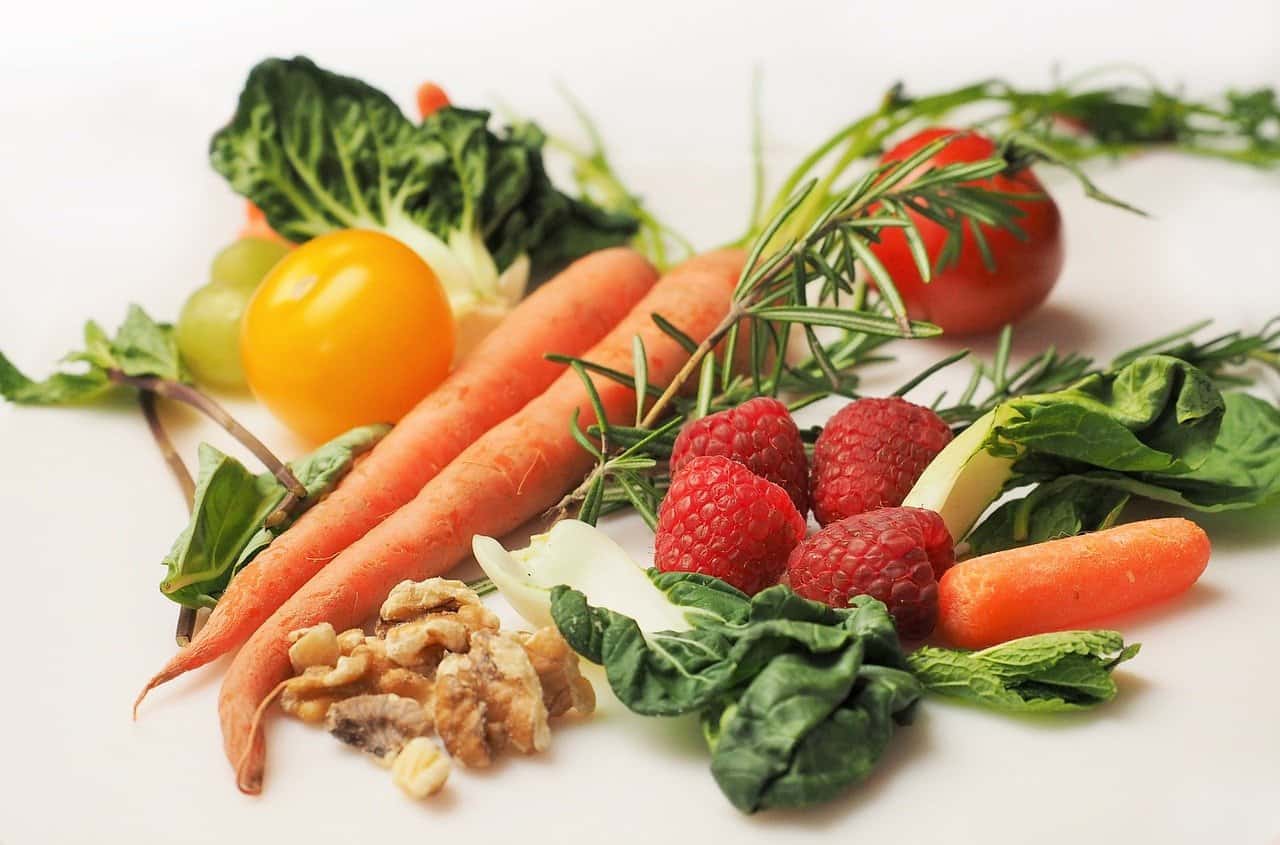Some links in the post are affiliate links and I get a commission from purchases made through some links found in the post.
Welcome to how to start growing carrots from scraps. While many people see carrots as annuals, they are actually biennials, only that they are hardy enough to serve as the former option.
These veggies come in varying shapes, sizes, colours, and overall varieties. Some can grow as long as ten inches, while others tend to achieve a few inches.
You probably know that you can grow carrots from seeds. But did you know that they can also grow from scraps?
That’s right! You no longer have to head to the store for some seeds if you want to grow carrots.
This article about will show you how you can use scraps to get a garden of healthy, thriving carrots. Here goes:
How to Grow Carrots & Other Vegetables from Scraps?
Guess what? Learning to start growing carrots from scraps also extends to most of your favorite garden veggies, allowing you to kill two birds with one stone.
These include green onions, regular onions, and potatoes. While the techniques might not be exact, they have a lot in common.
Scraps are the inedible tops you cut off from carrots when using them – those green parts you probably dump in the kitchen bin or compost heap each week
It turns out that they can do more than contribute to waste heaping in your compost!
What Scraps are the Best?
Not all scraps can work for growing healthy carrots. Make sure that you get fully grown and mature carrots for scrap harvesting.
Otherwise, they will not yield healthy carrots or any carrots at all. It also helps to get mature carrots with leaves on them as these tend to sprout at faster levels.
As for the species, you will be spoilt for choice, as this depends on which carrots you like best. However, it ultimately comes down to the kind of soil in your garden.
Chantenay is the first species that grows to lengths of up to six inches and can grow in most soil types. It, however, tends to thrive in rich and heavy soils.
The second type is the ball-type, which people also refer to as the Thumbelina. It is pretty much like the Chantenay only that it does not achieve the six inches in length.
Danvers is another good choice, which results in block-shaped carrots. It can do well in heavy and rich soils, including shallow ones.
Nantes, as you may have guessed, originates from France and features cylindrical carrots that measure up to nine inches. It also calls for rich soils.
The imperator variety is quite common and will do well in deep and aired soils with good drainage. It results in long roots that require adequate room to extend for the carrots to thrive.
And finally is the Amsterdam species, which is ideal for people who plant carrots in pots. It grows to lengths of about three inches and can do well in poor soil conditions.
You may also like: Can you grow carrots hydroponically
How to Prepare Your Carrot Scraps for Growing?
 The process is quite simple. You start by getting healthy and mature carrots from the garden or the store and cutting off the tops, which will serve as scraps.
The process is quite simple. You start by getting healthy and mature carrots from the garden or the store and cutting off the tops, which will serve as scraps.
Given that you want the scraps to thrive into carrots, you should leave some flesh on them. Store the remaining part of the carrots or use them in making the meal of the day.
Nothing goes to waste, which is a plus in this mode of gardening.
You can now trim the tops of the remaining flesh to leave some short stalks that are firmly attached to the carrots.
How to Choose the Right Container?
You will need to get the scraps to sprout for a start, which cannot happen in a pot.
Instead, you should get a small container in which the scraps can sit in the water without being submerged. Try your store punnets or similar containers for this.
Ideally, the container should be two centimeters deep. Its length and width will depend on how many scraps you wish to sprout at once.
You are also free to use several containers instead of just one. The container should be shallow to ensure that the scraps do not end up submerged in water; else, they can start rotting.
Place the scraps in the container lying face down such that the fleshy parts are at the top.
Pour plain water into the container, ensuring that the water does not submerge the tops. You do not need filtered or enriched water for this, plain water will work just fine.
You can now set the container in a shaded part of the room or leave it outside in an area that rodents and birds cannot access.
You may also like: How often should you water cilantro
When Should They Start to Sprout?
As long as you do not submerge the scraps, sprouting should start within three to four days. The sprouts will emerge from the fleshy scrap parts.
Keep watering the scraps to encourage the sprouting while ensuring that you do not submerge them.
Rotting is still a risk at this stage and will remain so for the duration of growing. As much as water is a friend, water logging is not.
When and How to Pot Your Carrots?
The sprouting will continue for a few more days before tiny roots start emerging from the sides of the scraps.
This emergence shows that the scraps are ready for transfer to a pot or garden where they can grow to their full potential.
At this point, it is okay to start thinking of a pot as an ideal container. You can also use large containers, as long as you make modifications allowing for adequate water drainage.
For garden growing, start by tilling and loosening the soil before enriching it with some inputs to make it favorable for carrot growth.
 When using pots, you have more flexibility regarding the soil you can use. Home improvement stores and nearby garden centers can provide you with a nutrient-rich soil profile you can use.
When using pots, you have more flexibility regarding the soil you can use. Home improvement stores and nearby garden centers can provide you with a nutrient-rich soil profile you can use.
Start by wetting the soil to make it easier to work before making shallow holes in it, about four to five inches apart.
The holes should be deep enough to hold the scraps without leaving some of their parts above the ground.
You can now place the scraps in the spaces, ensuring that you leave enough room between them to allow for fair competition for water and nutrients.
Water the soil once again and leave the pot in a shaded area for the first few days as the scraps adjust to the new environment.
On the third day, you can transfer the pot to a sunlit area free of birds and rodents access.
For garden growing, you can try shading the scraps with mulch on the first few days before using other means to keep rodents away.
The carrot leaves should start growing aggressively by the end of the first week if the scraps continue sprouting as before.
These leaves are useful in salads as well as other meals. Again, nothing goes to waste.
If you’re enjoying this article, check out our article on do onions grow underground.
How to Take Care of Carrots?
Watering the carrots is an essential part of their aftercare, without which you will get poor or no yield.
Ensure that the soil remains moist and find means to reduce evaporation if you live in a hot climate.
Mulch is especially useful in plants growing in the garden as it can help in sealing in the moisture.
Weed the carrots regularly and check under the mulch for any unwanted plants. While on this, ensure that you cover any exposed part of the carrot above the ground; else, it will taste bitter.
When to Harvest Your Carrots?
The longer and bigger your carrots become, the sweeter they will be. However, you are free to start enjoying them as soon as they reach the desired size.
Baby carrots are ready for harvesting in as few as 30-40 days, while mature carrots take about 50-80 days.
You can check for readiness by lifting two carrots and looking at their size. If the soil is loose, you can easily lift them.
If not, you can work the soil using a spade to lift the carrots without breaking the roots.
A ready carrot should have a diameter of about 0.75 inches and should have its crown slightly sticking out.
Note that where temperatures can reach freezing, you should harvest all the carrots before freezing begins.
If the temperatures do not drop below 20°F, you can leave the carrots in the ground, provided you apply heavy mulch on them.
You may also like: How fast do mushrooms grow
Common Mistakes Made when Growing Carrots Scraps and How to Avoid Them?
Not Watering Them Enough
Earlier, we touched on the need to keep the scraps moist during and after sprouting.
Lack of moisture leads to compacting and crusting of the soil and can deter seedlings’ growth. Also, being in a hot area can affect the seedlings’ growth, so be sure to keep them in a cool area.
Shading Them Too Much
Also, while water is important, you should not leave the seedlings in humid and cold conditions.
Ensure that the drainage is adequate; else, the seedlings will collapse or rot owing to fungus growth. Overcrowding can also create ideal conditions for the growth of fungus.
Exposing Them to High Temperatures
Have you ever tasted a bitter carrot? Well, carrots burn their sugars in warm weather, resulting in a bitter taste.
As such, you should protect them from heat and ensure the soil remains moist at all times.
Final Thoughts: Growing Carrots from Scraps
 You now have another use for carrot scraps, which may have otherwise ended up in the waste bin.
You now have another use for carrot scraps, which may have otherwise ended up in the waste bin.
As long as you keep the scraps shaded and well-watered, they should sprout, leaving you with healthy seedlings that can produce tasty carrots.
The good thing is that you can continue the cycle by using sprouts from the harvested carrots to grow more carrots. How fun is that! Have fun growing carrots and other vegetables from scraps!
Written by: Daisy Njeri

